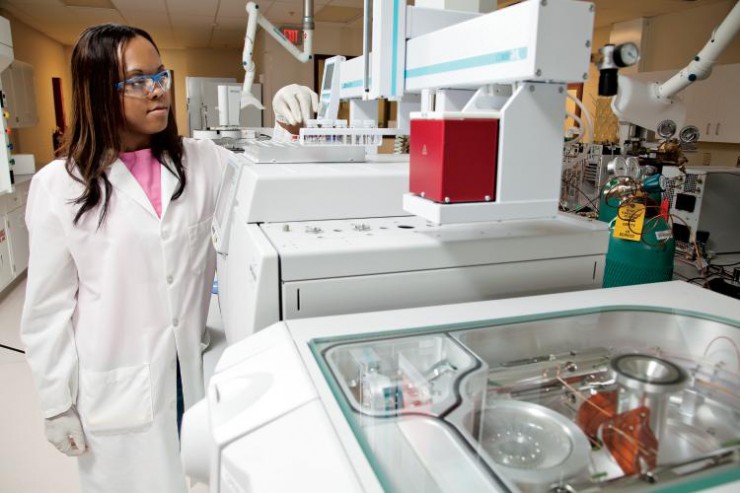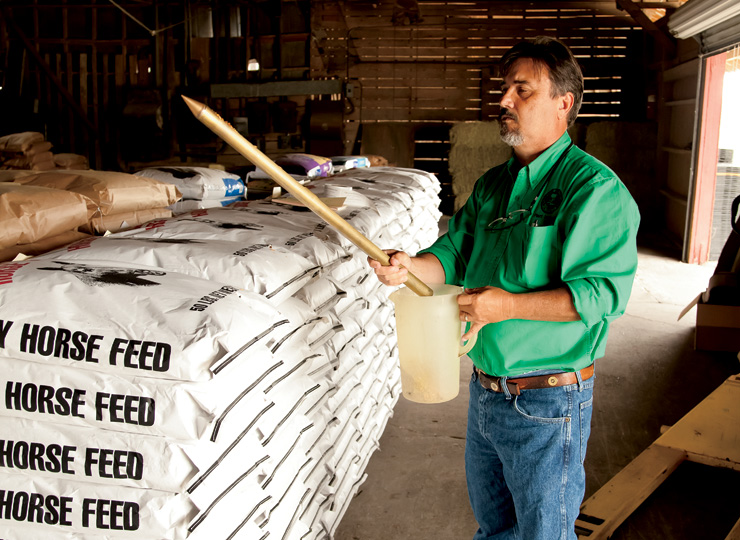Home > Georgia > Georgia Farm to Table > Inspections Ensure Safety of Food, Plants and Animals
Inspections Ensure Safety of Food, Plants and Animals

Food safety inspectors fan out across the state with a different type of grocery list. Some of them pick up foods at farmers markets and grocery stores for testing. Others focus on processing plants, slaughterhouses or crops.
They’re part of a cadre of inspectors and analysts working behind the headlines about food recalls and illnesses to protect the food supply.
For example, in summer 2012, chopped onions from California potentially contaminated with Listeria led to the recall of products as varied as pimento cheese and mango salsa from Georgia and other states.
A 2009 salmonella outbreak in Georgia peanuts forever altered how food is inspected in the state. Legislation and leadership led to increased training, a focus on working together and a close look at how each section worked.
“You need to eliminate duplication of those resources and concentrate on the risk associated with those products and manufacturing techniques,” says Oscar Garrison, Food Safety Division director.
Some farms and plants hold themselves to standards beyond what the state requires, making them less risky to the food supply. With new research, the state can focus on farms on the opposite end of the spectrum.
“Other farms may not have the stellar histories, and those that fall in those lower categories have a higher risk to the food safety system in this country,” Garrison says.
The changes made after that Georgia outbreak have made it easier to implement the federal Food Safety Modernization Act, which focuses on preventing outbreaks instead of reacting to them.
Dr. Wendy Cuevas-Espelid, assistant state veterinarian, says she has noticed the general public is more interested in knowing where their food comes from and care that it is safe.
“I do think that consumers are becoming more curious, and want to know more about the whole animal industry,” she says.
Inspectors in the Animal Industry Division look for tumors, parasites and abnormalities in carcasses and also test slaughterhouses.
“We want to make sure animals are healthy, that they’re not carrying infectious disease from one animal to another and then getting in the food chain,” Cuevas-Espelid says.
Animal Industry is one of several department divisions with inspectors that together test produce in stores, processing plants, fields and anywhere in between.
The list of what they test for is long but includes: E. coli, salmonella, Listeria, staph, histamines in fish, sulfites in dried fruits, pesticide residue, chemical contaminants and the fat content of ground beef.
New, high-tech equipment at the 72,000-square-foot Tifton Agriculture Laboratory complex allows analysts to check for even smaller amounts of pesticide residue and chemical contaminants, says Dr. Reuben Beverly, director of the Plant Industry Division, which tests produce and crops.
“We probably had these outbreaks for years,” he says. But now science and surveillance of the food network has made it possible to not only discover related cases but also track down illnesses to a particular product or type of food.

Considering the number of samples tested, Beverly says scientists rarely find bacteria or chemicals of concern. But when they do, they have an established working relationship with colleagues at the Department of Health and other agencies. That has increased with concerns about potential bioterrorism or agriterrorism.
“We’re keeping that awareness and vigilance whether it’s intentional or accidental,” he says.
The number of small hobby farms and local kitchen operations has put a new twist into the world of food safety regulations.
Unable to inspect every jar of jam sold at farmers markets across the state, the Department of Agriculture has recently established a “cottage food license.” People who wish to produce “non-potentially hazardous food” in a home kitchen must register and pay a $100 licensing fee annually.
Garrison said this is intended for home cooks making wedding cakes, jams and similar items that do not easily spoil and are sold only to the end consumer. The regulations require the makers to take food safety training and allow inspectors into their kitchens. Products will also carry a label printed in 10-point Ariel or Times New Roman fonts, stating that the food was “prepared in a kitchen not subject to state food safety inspections.”
Dairy inspectors, who also fall under Garrison’s division, have seen an increase in small goat farms.
“Some of the trends that we’re seeing are the local aspect of food production,” he says. “Cottage food is a movement that has been spreading across the country.”



